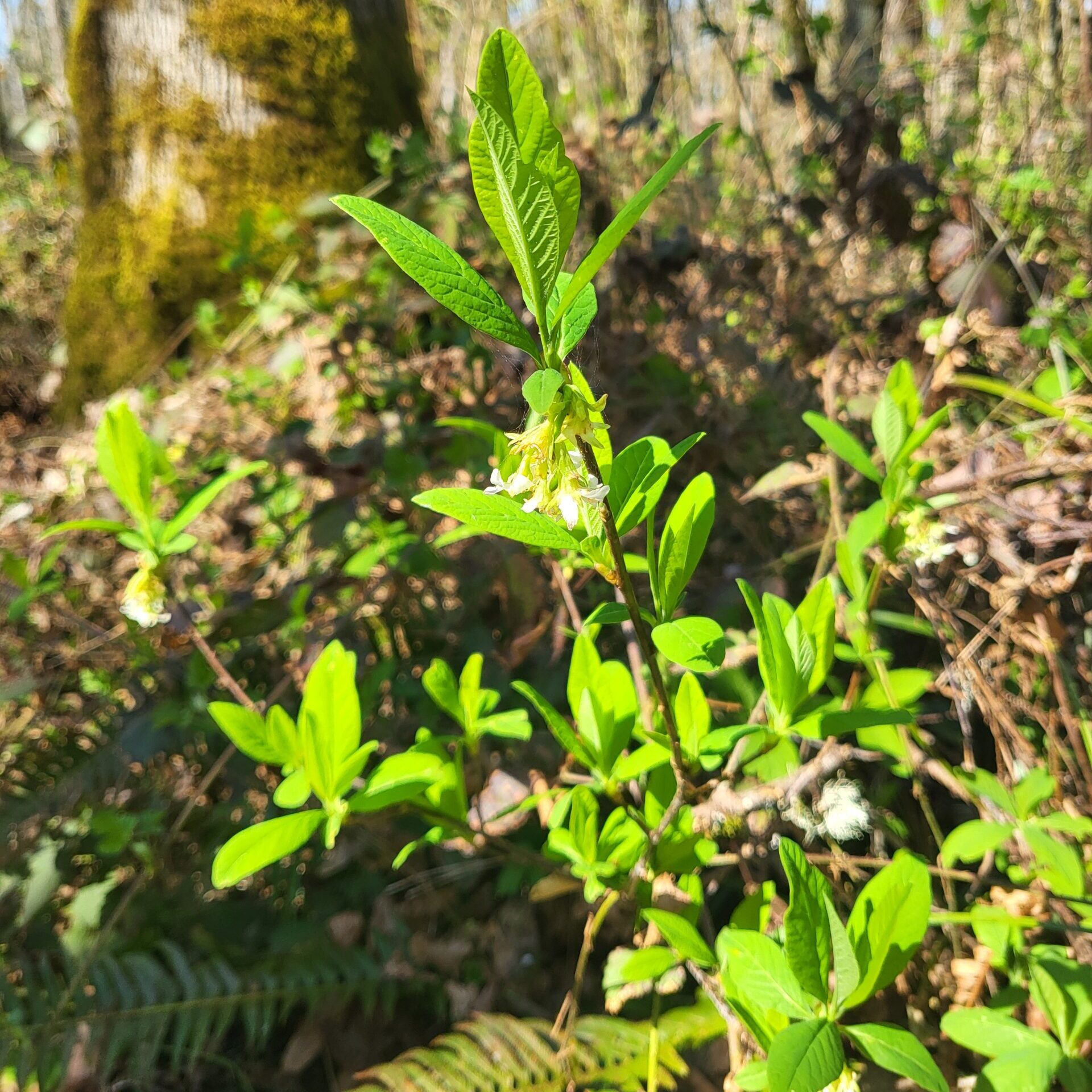What is Indian plum?
Indian plum is a shrub native to Northwest Oregon forests. I like to call it ‘the first bush’ because it’s the first to start getting its leaves in spring (sometimes as early as December!) and the first to start going yellow in the fall.
So how do you identify Indian plum? Look for a tall shrub (sometimes up to 12 ft in height) with a long, skinny stem. The leaves are lance-shaped and bright green with prominent, pale veins, and smooth margins rather than serrated edges.
Want to hear an interesting fact about Indian plum? It has separate male and female plants, and only the female plants produce fruits in the summer. Now want to hear an even more interesting fact? These fruits look like berries, but technically they’re drupes, which makes them a type of stone-fruit, just like their namesake and distant relative, the plum.
These Indian plum fruit/drupes/berries are tiny (about the size of your fingertip) and smooth-skinned, and they hang from branched red stems in clusters of two. They come out in late spring, but they’re usually not ripe until July, when they turn a purple-black color reminiscent of a Concord grape.
And, yes, Indian plum berries are edible! They taste somewhere between a watermelon and an almond, but there isn’t much substance to them—they’re seedy, and, if they’re not completely ripe, they can sometimes be bitter. Be careful not to eat too many at one time, because Indian plum berries have small amounts of Hydrogen cyanide in them, just like many of their stone-fruit relatives.
And, as a reminder, please don’t eat any foraged/wild plant foods unless you’re 100% sure that you’ve identified the plant correctly. Although Indian plum doesn’t have any major look-alikes, it can be easy to get things mixed up when you’re new to identifying plants, so be extra, extra sure.
Let me know in the comments if you have any questions, and keep reading below for more facts about Indian plum.



Indian Plum Stats
- Scientific Name: Oemleria cerasiformis
- Common Names: Indian plum or osoberry
- Plant Family: the rose family (Rosaceae)
- Origin: native to Oregon and the PNW
- Ecosystem: understory shrub found in forests throughout the Willamette Valley, Coast Range, and Western Cascades
- Leaves: lance-shaped (see leaf shape diagram), entire margins (see leaf margin diagram), deciduous (loses leaves in late summer and buds again in early winter)
- Flowers: small white flowers with five petals, blooms in early spring
- Fruit: dark purple drupes, present only on female plants, ripens in early to mid July
- Edible Uses: fruits are edible but seedy









